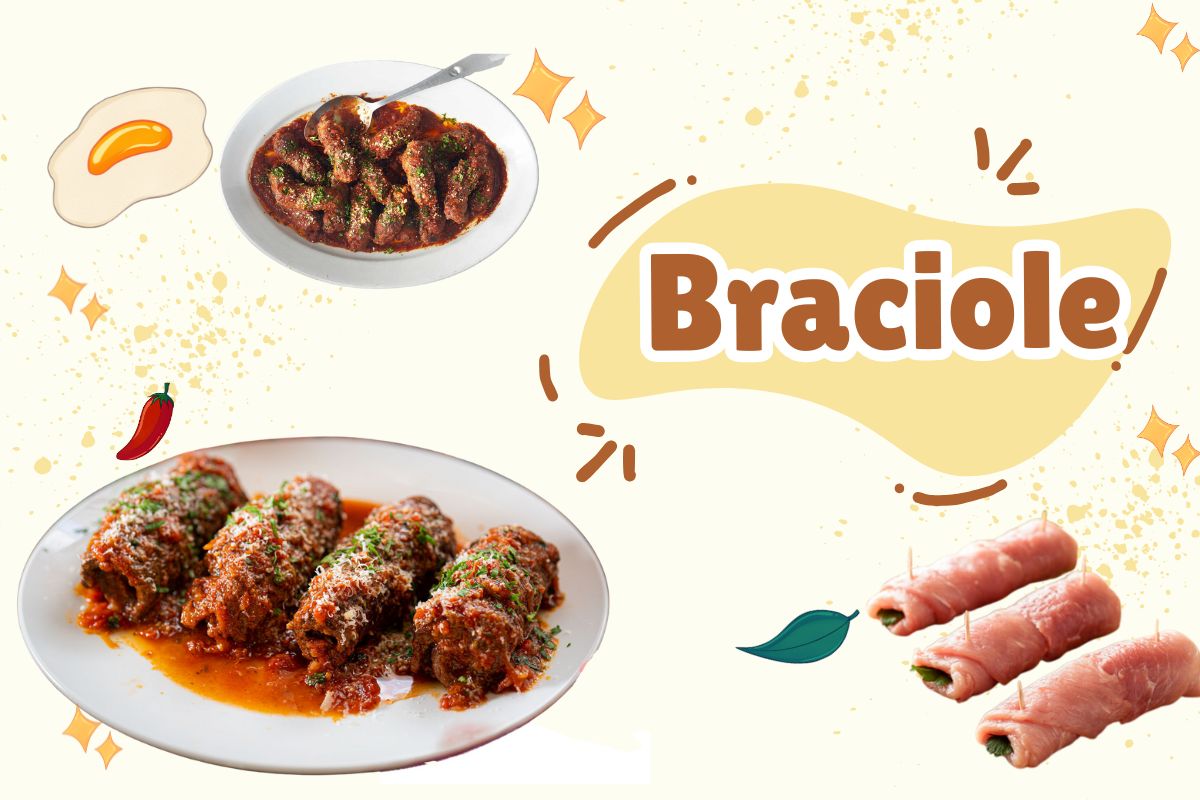Braciole is among the most classic Italian dishes and one of the most delicious, expressing the richness of Italian flavors and traditions. This dish is packed with tender meat and various ingredients simmered to perfection in a very tasty sauce. It hails from Southern Italy, and has become, over the years, a cherished favorite, not only for families preparing dinner at home, but for many restaurants throughout the world, as well. In this article, we will follow the history and preparation methods as well as variations with cultural significance related to Braciole.
Table of Contents
History and Origins
Braciole, which is pronounced “brah-CHO-lay,” is a dish that came from South Italy, especially territories like Campania, Calabria, and Sicily. The root word for “Braciole” is the Italian “braciola,” originally meaning a slice of meat cooked by coals. Braciole, traditionally, is made from sliced thin pieces of beef, pork, or veal wrapped with other things. It is then slow-cooked to become soft and tasteful.
This dish originated when all parts of an animal were put together to make tasty and healthy foods.
Braciole evolved to become inclusive of a lot of fillings and different cooking techniques applied in Italy by different regions.
Preparation Methods
- Several preparation steps go into Braciole having a rich flavor and its texture tender. This is, however a basic outline on how Braciole is generally prepared:
- Selecting the Meat: Braciole can be prepared with almost any cut of meat: beef, pork, veal, or even chicken. Meat is usually sliced thinly so that it can be rolled easily and cook evenly.
- Preparing the filling: Fillings for Braciole may differ a lot, but usually breadcrumbs, grated cheese, either Parmesan or Pecorino Romano, garlic, herbs, including parsley and basil, as well as some chopped pine nuts or raisins are included. Distribute the filling evenly on slices of meat.
- Rolling and Securing the Braciole: Once the filling is ready, roll the slices of meat up nice and tight and secure with toothpicks or kitchen twine so the filling doesn’t come out while it cooks.
- Browning the Meat: The rolled-up Braciole is browned in a hot pan of olive oil, developing that rich, caramelized crust. This gives the dish depth of flavor.
- Simmering in Sauce: After browning, the Braciole is simmered in a flavorful tomato sauce for several hours until the meat becomes tender and is saturated with flavors from the sauce. This includes tomatoes, onions, garlic, wine, and any number of herbs and spices that are commonly used.
Variations of Braciole
The fundamental idea of Braciole has not changed, but it is a very versatile recipe and offers numerous regional and personal variations to create something unique. Some examples are the following:
- Sicilian Braciole: This usually has raisins and pine nuts included in the filling, so the dish tastes sweet and nutty. It also often makes use of Sicilian Pecorino cheese.
- Neapolitan Braciole: The traditional filling for Braciole in Naples is made from breadcrumbs, garlic, parsley, and Parmesan cheese. It’s usually cooked in a rich tomato sauce and often served with pasta.
- Pork Braciole: This recipe tastes a little different when made with pork instead of beef. Fennel seeds and red pepper flakes are put in to give it more heat.
- Veal Braciole: Veal is another well-used meat in Braciole, especially for it tenderness. The stuffing may be similar to any of the versions above. But the cooking time would most probably be different because it can quickly become overcooked.
Cultural Importance
Braciole holds a place in Italian cuisine and culture. It is often tied to family gatherings, holidays, and special occasions. Such a dish is a favorite for Sunday dinners and festive celebrations because of its rich flavors and comfort.
The Braciole is often a family affair and usually prepared by many of its members from the assortment of the filling to the rolling of the meat. This communal aspect adds to the cultural significance of the dish since reinforcing the importance of family as part of the culture of Italian cuisine.
Servings Suggestions
Braciole is usually served as a main course with the sauce it was cooked in. It goes very well with pasta, like spaghetti or rigatoni, that can be tossed within the tomato sauce. Some crusty Italian bread is great to dip into that sauce.
For a full-course meal, Braciole can be served with fresh green salad or roasted vegetables on the side. A rich red wine glass, such as Chianti or Barolo, is a perfect accompaniment that will complement the rich flavors of this dish well.
Conclusion
Braciole is one of the quintessential Italian dishes, a true revelation of the country’s full-fledged culinary traditions and flavors. With its very tender meat, flavored filling, and savory sauce, the dish is so inviting and comforting, making it enjoyed by many for a special occasion or, as in the case for most families, Sunday dinner. Among all these wonderful dishes of Italian cuisine, Braciole is not to be missed; it represents a taste of Italy’s culinary heritage.
















